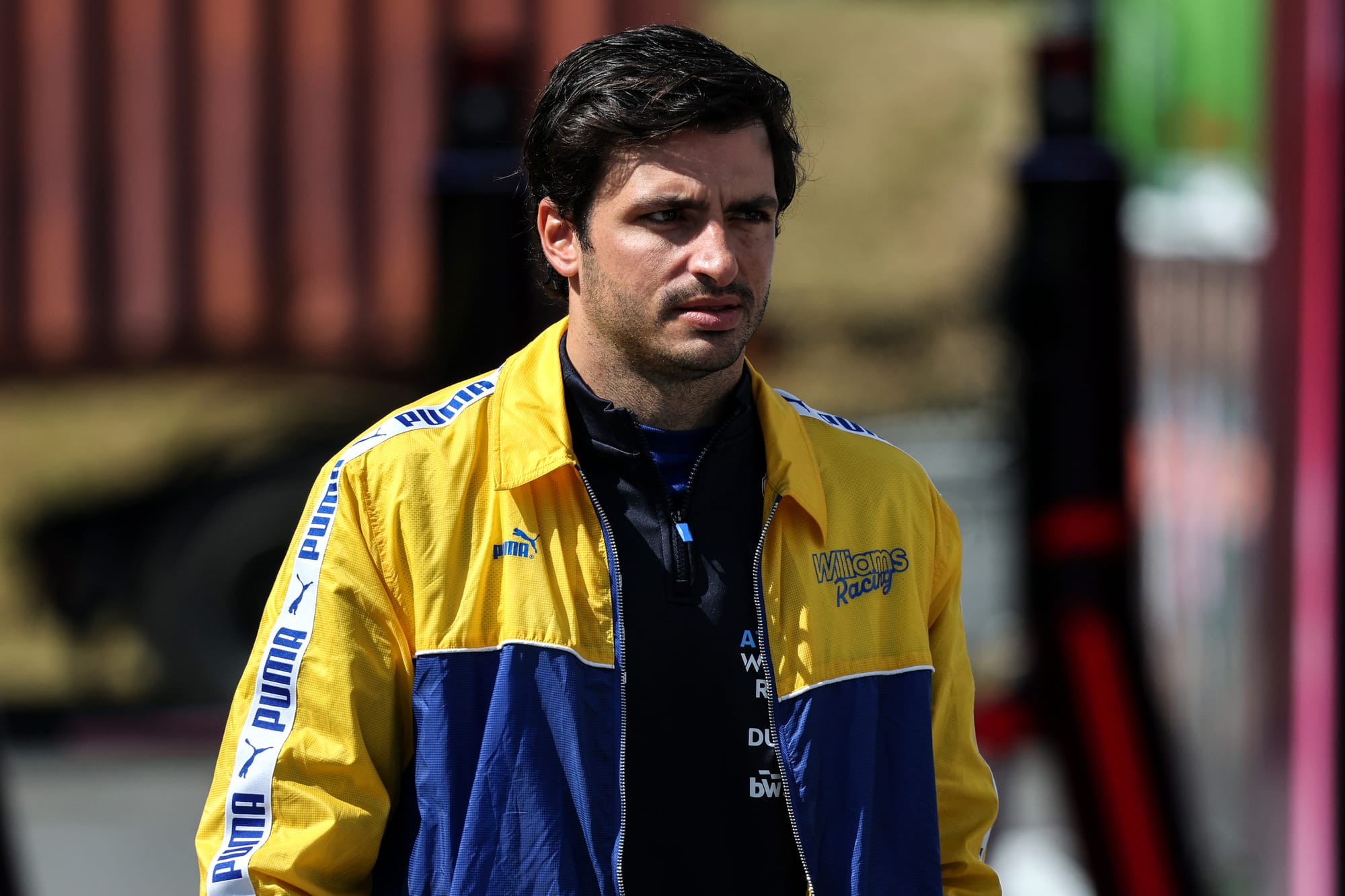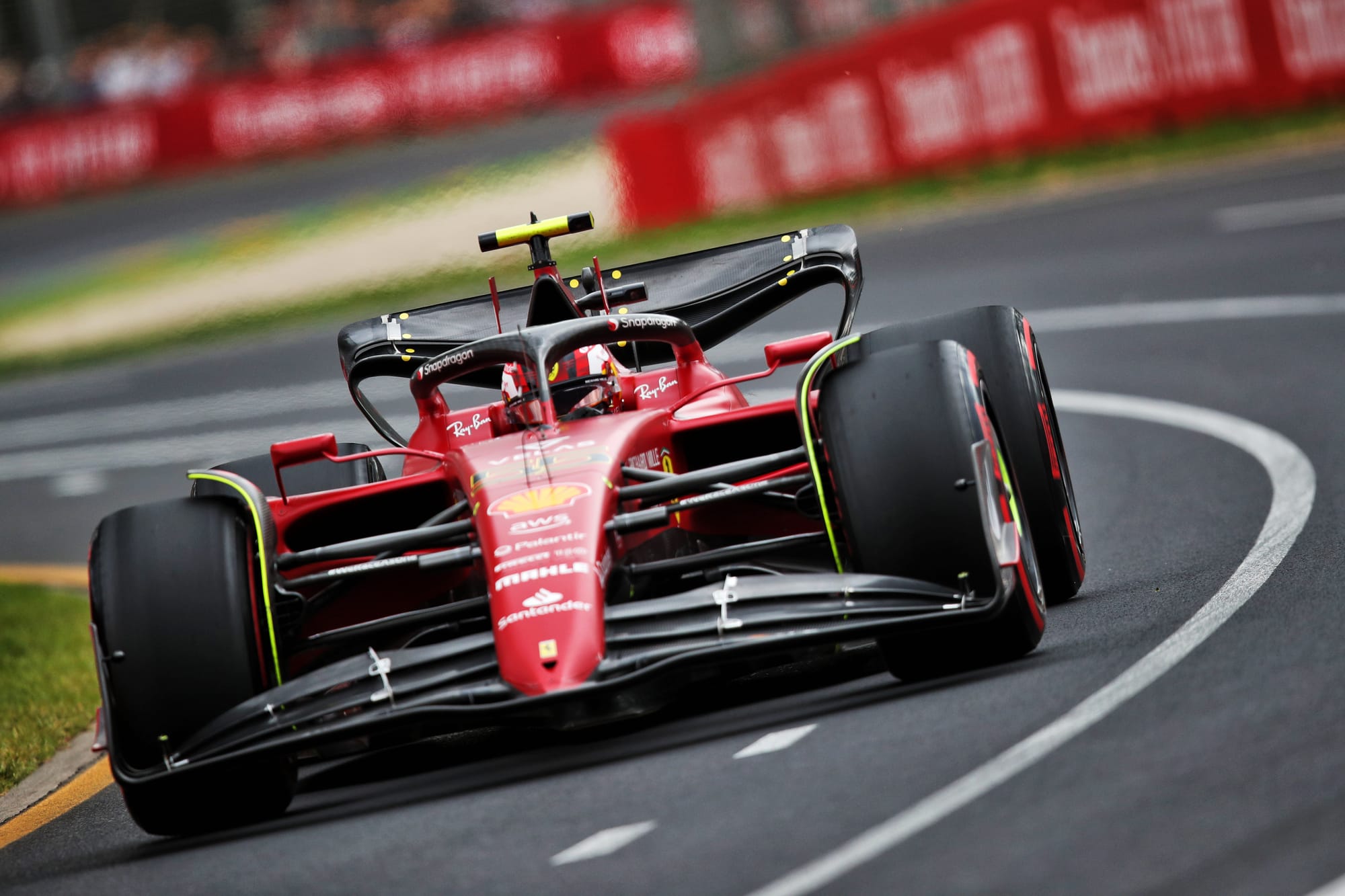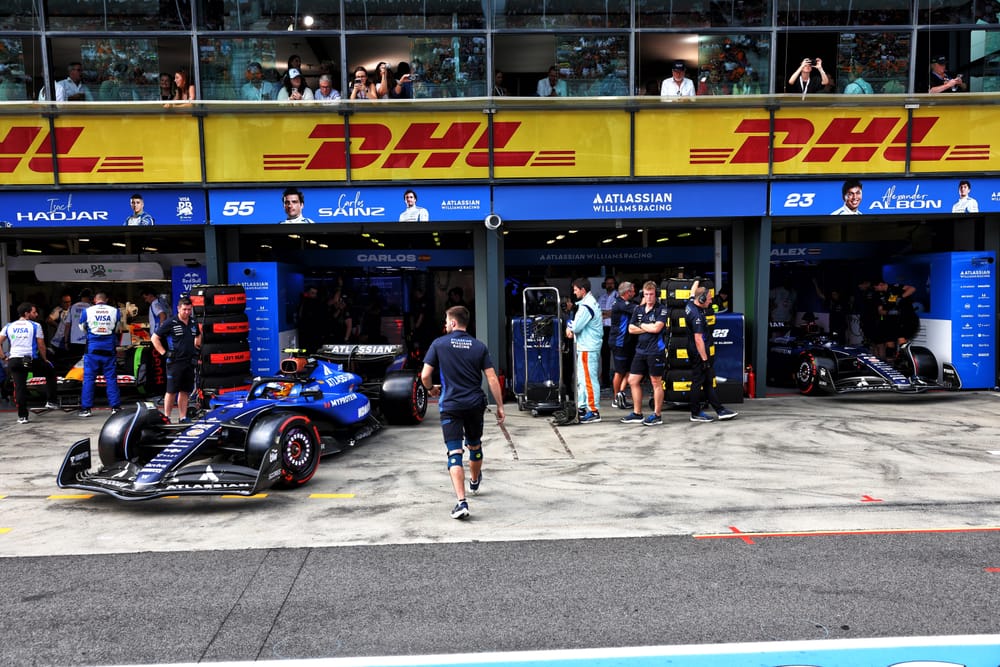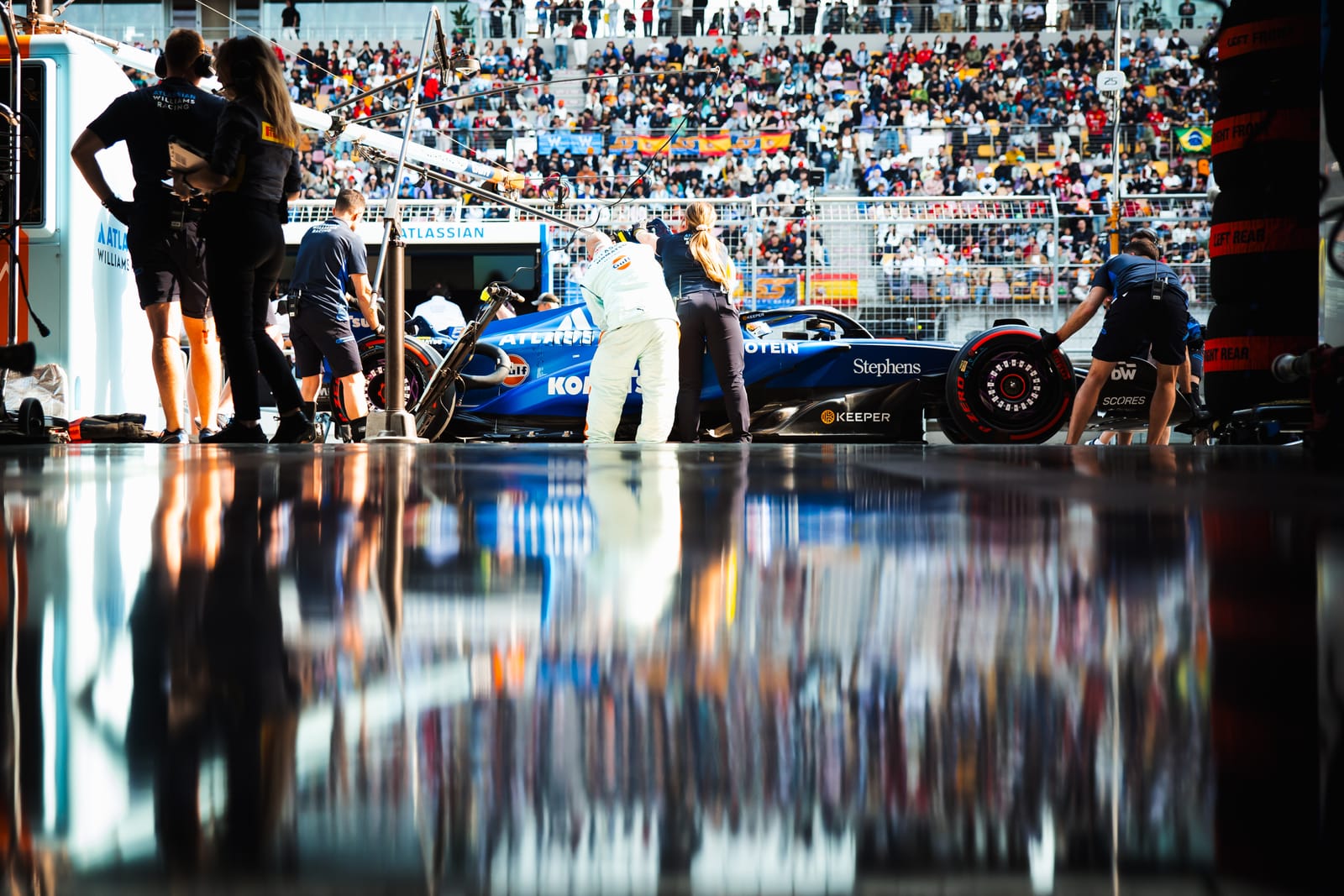Carlos Sainz suggests unpicking habits he got from Ferrari's recent Formula 1 cars is key to unlocking progress needed at Williams.
Sainz has not yet reached a level he is happy with at his new team, and has been in particular struggling to extract as much out of his car in qualifying as team-mate Alex Albon.
Having spent time since the Chinese Grand Prix running through the data and working with his engineers, Sainz says he has some ideas about changes he needs to make to get more on top of things.
And he reckons that, as much as some gains can come from finding an improved set-up, equally he needs to adjust his driving style to the demands of a Williams.
He believes that ways of attacking qualifying laps that were second nature to getting the best out of Ferrari's recent F1 machinery simply will not work in his current car.
"I was used to a certain type of car in Ferrari, which made me end up driving - especially since 2022 - in a very specific way, to extract everything about that car," he said ahead of the Japanese Grand Prix.
"And you fall into, let's say, habits in your driving, that then you apply to the next car. It might work in some corners, but in others it makes you very weak. And that's probably a bit of it.
"Then there's also a side of set-up that can help me drive in the way I like to drive a car and we're also working on that. So it's probably just uniting both."
GPS analysis comparing Sainz and Albon's qualifying laps in China has pointed to a very different approach to getting speed out of the car over a lap.
Sainz appears to attack much more on the entry to the corners – braking later and carrying more speed into the apex.
However, this appears to compromise his exit where Albon is able to come out of the turn quicker – carrying any momentum advantage he has at this point down the subsequent straights.
While the two different approaches over a whole lap may not make a huge difference in lap time on some tracks, Sainz thinks that there may be gains to be had from adjusting his approach to corners.
"The car has completely different strengths and weaknesses to the car I used to be driving for three years, adapted [to] for three years, and that I was so quick with last year," he said.

"So that's more or less the point. You approach the corner in a way, expect the car to do something, and then you need to completely reverse engineer and say, 'OK, start from zero, this is not the way you approach it'."
But while the theory is simple, Sainz admits that unpicking elements of driving style that have been rammed home for years is not easy – especially when things ramp up in flat-out qualifying laps.
"From a driving perspective, the biggest challenge you can have is to relearn a bit the way to approach a corner," he said.
"In your system, you have a certain level of muscle memory, and especially under pressure in qualifying, you tend to go back to your ways of muscle memory, and the way you drive.
"You tend to have that headspace in free practice to change your driving style.

"I remember in '22, when I struggled a bit with the Ferrari, that I managed to be quick in practice, but then you get to qualifying and that natural instinct comes back and you just need to be very disciplined.
"It's something that takes time. It's something that takes a lot of effort from a mental and driving perspective. But it's a challenge that I've always enjoyed, and it's a challenge that I've always managed to get on top of.
"In all my career I've driven five different cars [teams], different sets of regulations, and probably two races is still not enough to understand that. But I enjoy it, and I enjoy the challenge."




